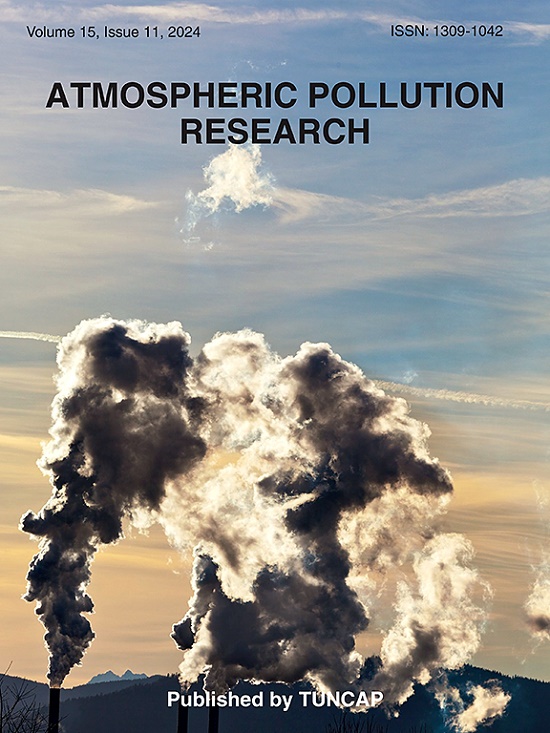Modification effects of ambient temperature and relative humidity on acute upper respiratory infection morbidity by PM2.5 components in university students
IF 3.9
3区 环境科学与生态学
Q2 ENVIRONMENTAL SCIENCES
引用次数: 0
Abstract
The present study attempted to investigate the associations of PM2.5 and its components with the acute upper respiratory infections (AURI) and the modification effects of temperature and relative humidity (RH). Daily AURI visits data were obtained from Zhengzhou university hospital from 2014 to 2019. Distributed lag nonlinear modelling (DLNM) was used to assess the associations between PM2.5 and its components and AURI morbidity. The modifying effects of temperature and RH on the associations of PM2.5 and its components with AURI were explored by DLNM with cross-base interaction terms of PM2.5 and its components with temperature or RH. During the study period, 87,186 university students visited AURI. The relative risk (RR) per interquartile range (IQR) increase for PM2.5 and its components NO3−, SO42−, NH4+, BC and OM were 1.03 (0.99, 1.09) and 1.05 (0.99, 1.11), 0.98 (0.93, 1.04), 1.02 (0.97, 1.08), 1.07 (1.02, 1.12), 1.08 (1.03, 1.15), respectively. Low temperature increased the adverse effects of PM2.5 and its components NO3−, BC, OM. High relative humidity enhanced the adverse effects of PM2.5 and its components NO3−, NH4+, BC, OM. The adverse effects of NO3−, BC, and OM were only evident in the female university students and during the cold season. PM2.5 components may adversely affect AURI morbidity in university students. Low temperatures and high relative humidity may exacerbate the deleterious effects of PM2.5 components. This reminds us to enhance the prevention of AURI caused by PM2.5 components, especially in cold and humid meteorological conditions.
求助全文
约1分钟内获得全文
求助全文
来源期刊

Atmospheric Pollution Research
ENVIRONMENTAL SCIENCES-
CiteScore
8.30
自引率
6.70%
发文量
256
审稿时长
36 days
期刊介绍:
Atmospheric Pollution Research (APR) is an international journal designed for the publication of articles on air pollution. Papers should present novel experimental results, theory and modeling of air pollution on local, regional, or global scales. Areas covered are research on inorganic, organic, and persistent organic air pollutants, air quality monitoring, air quality management, atmospheric dispersion and transport, air-surface (soil, water, and vegetation) exchange of pollutants, dry and wet deposition, indoor air quality, exposure assessment, health effects, satellite measurements, natural emissions, atmospheric chemistry, greenhouse gases, and effects on climate change.
 求助内容:
求助内容: 应助结果提醒方式:
应助结果提醒方式:


